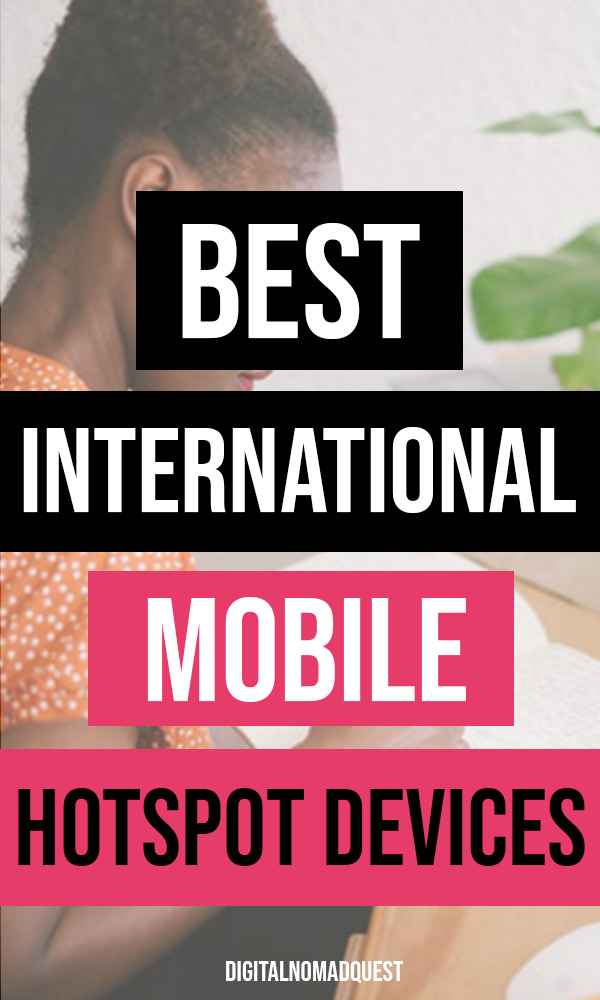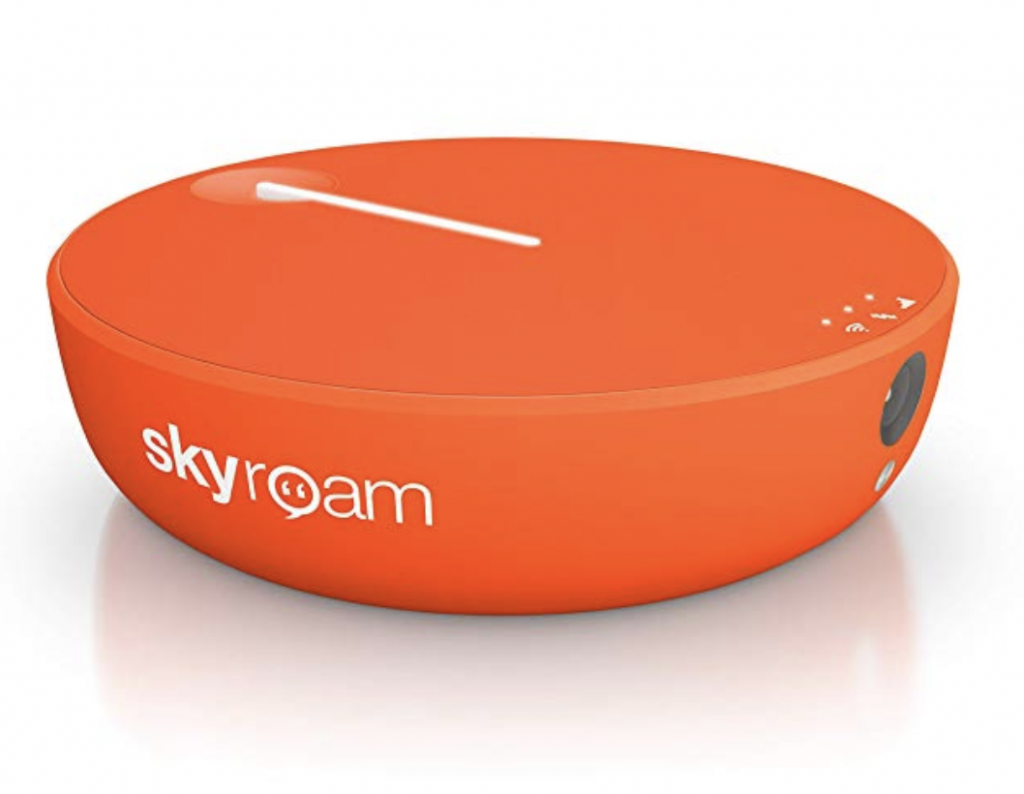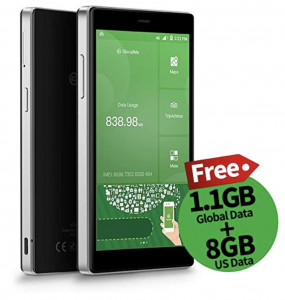In this post, we’re going to talk about best international mobile hotspot devices for digital nomads! Access to the internet is crucial for the success of the digital nomad, for obvious reasons. Without reliable connectivity, you will face challenges with completing work and corresponding with clients, thus putting your business in jeopardy. While wifi can be found in most places either for free, for paying customers of an establishment, or for a certain rate (hourly, daily, weekly, monthly) there are still some parts of the world where it will be difficult to find a connection. This is where mobile hotspot devices can be extremely convenient, not to mention a more reliable option than trying to find wifi wherever you are.

Best International Mobile Hotspot Devices for Digital Nomads
Mobile Phone
Your mobile phone can very easily be turned into a hotspot on an international roaming plan by tethering, without having to purchase a specific hotspot device or switch SIM cards in each new country you visit. However, the main drawback with this strategy are the exorbitant costs that your phone company will likely charge you for roaming charges or the amount of data that you need to use. That being said, in a pinch it can be a lifesaver. It’s simple to do, usually by going into the network or connection settings in your phone and turning on the mobile hotspot or tethering option, then entering the password provided on your phone into your computer.
An alternative to purchasing an international roaming plan would be to use an unlocked smartphone and purchase a new SIM card in each country that you can then use to create a mobile hotspot using local data (ie. not roaming). This can usually be a less expensive option than an international roaming plan, but it can be inconvenient to have to switch the SIM card in your phone every time you enter a new country. In addition, when you switch your SIM card, you won’t be able to receive or send calls and text messages under your usual phone number.
Mobile Hotspot Device
A standard mobile hotspot device, such as the MiFi 8000 Mobile Hotspot from Sprint or the Jetpack MiFi 8800L from Verizon, acts similarly to the way your mobile phone hotspot works, except that it is a better option for connecting multiple devices and doesn’t drain your phone’s battery like using the phone’s tethering capability would. In fact, the battery life on these mobile hotspot devices tend to be quite good, lasting for several hours of use or more. With these types of devices, you can create a wifi hotspot wherever you have cell service and you do not need to get a local SIM card because they rely on your cell phone service.
The main drawback with this is that, like a cell phone purchased in your home country, international roaming can be expensive if it is not an international hotspot device or if you don’t have an international roaming plan for this mobile hotspot device. It is important to check out what the rates are with your specific carrier. They may also limit the number of countries that it can be used in. For example, a mobile hotspot device purchased in the US may be functional in Canada and Mexico, but no other countries.
International Hotspot Device
Arguably one of the best options for digital nomads is an international hotspot device. This works like a combination of the mobile hotspot device described above plus an unlocked phone with an international SIM card. You get the best of both worlds in that you can continue using your cell phone with your original SIM card (and thus your phone number) or use an abundance of international roaming (particularly when it comes to data usage) and by using a mobile hotspot you can easily switch the SIM card as you move through different countries to take advantage of local service rates. As an added bonus, you don’t end up draining your phone’s battery or overloading it by tethering multiple devices needing wifi; mobile hotspots will be able to provide ample battery power while you browse.

Shopping for an International Hotspot Device
There are plenty of options on the market for a portable international hotspot device. Many have added features such as storage or power bank capabilities. There are a few key features that can help to guide your choice of device depending on your needs.
- Battery life: Different devices have different battery capacities, just like most electronics. So if you plan to be without access to power for longer periods of time, then you may want to steer yourself towards devices with longer battery life. Or if power won’t be a problem, then this is less important to consider.
- Number of devices: Some mobile hotspots can accommodate just a few devices, such as the tethering capability on your cell phone, while others can allow up to 15 devices to connect at the same time without compromising connection quality. If you have a number of electronics that need wifi, such as a camera, tablet, phone, laptop, and more, then you’d be better off picking a device that can accommodate multiple devices.
- Speed: While 5G is slowly taking over as the new standard for data and internet speed, many mobile hotspots are still 4G+, 4G, or even 3G. It may be worth considering holding out for a 5G device depending on what kind of investment you are willing to make. Some countries only have 3G options, but a 3G SIM card will still work in a faster hotspot device.
Skyroam Solis X
The Solis X is the newer version of the Solis from Skyroam. Skyroam is a global carrier that is available in over 130 countries and boasts more than 500 retail locations, making it incredibly accessible in many of the places you may plan to travel. The Solis X is a mobile hotspot with 4G LTE connectivity that also has a built-in 4700mAh power bank, HD camera with 8 megapixels, speaker, microphone, and a customizable smart assistant. On a single charge, it can last up to 16 hours, with the exception of when some of the battery charge is used from the power bank feature to charge another device. Not only is the Solis X a neat piece of pocket-sized multi-purpose technology with great speed, but it can also provide wifi for up to 10 devices. The Solis X is priced at $179.99, but if the added features seem a bit much to you then the Solis Lite provides the same connection capabilities but with an optional power bank and without the camera, smart assistant, microphone, or speaker for $119.99 instead.
Skyroam also offers reasonable data rates that come in a variety of packages to accommodate light users to heavy users. The best part is that there are no contracts, thus no commitment to paying for a service that you aren’t using. For users with modest connection needs, you can purchase 1GB of data per month for just $9 with each additional GB costing $9, which can be added at any time. For more moderate users, you can pay $9 for unlimited usage within a 24 hour period. This is a great option for those who are taking a shorter trip or who won’t need a mobile hotspot every day. Finally, for heavy users, $99 per month earns you unlimited internet access for 30 days; when you work it out this is just $3.30 per day and it is a worthwhile cost if you plan to use wifi for more than 11 days out of the month.
Teppy
This portable hotspot by TEP Wireless is so slim and sleek that it can fit in your pocket! It is smaller than the Solis options described above and thus only has about 6 hours of battery life on a single charge and can only connect up to 5 devices in one go. What it lacks in capacity, it makes up for in other features such as free wifi access at over 60 million hotspots worldwide as well as on flights with specific carriers such as Lufthansa and American Airlines. Their free TEP+ app can connect you with local guides called Tep Gurus that can provide advice about accommodations, restaurants, and attractions. Also within the app is the ability to call and text at extremely affordable international rates. Teppy users are also provided with free use of Kitestring, an SMS-based safety service for travellers that tracks your location and can notify emergency contacts if you are in danger.
There are options to rent or buy the Teppy device. Rental plans include the Teppy device as well as data and range from $6.95 per day to $12.95 per day. Alternatively, the Teppy can be purchased for $129 and then you have the option of pay-as-you-go plans starting at $7.95 only when you connect. Finally, you can even get a free Teppy device if you sign up for a subscription starting from $99 per month. One thing worth noting is that Teppy provides unlimited internet, but their plans offer a number of GB worth of high speed coverage. After using your high speed data, you will continue to have internet access that will only be sufficient for emails, social media, and general browsing that doesn’t require streaming or heavy data usage.
ZTE MF971V
This unlocked mobile hotspot has 4G+ connection capability and can accommodate up to 32 devices at a time! The 2400mAh battery can last for up to 20 hours on a single charge and also doubles as a power bank to charge other devices in a pinch. The fact that this device is unlocked means that it can be used with a SIM card from any carrier in any country with a rate plan that best suits your needs. For example, WorldSIM sells the ZTE for $128 with a free WorldSIM SIM card included that can connect in 188 countries with prepaid or data bundles available in a range of prices.
GlocalMe G4
GlocalMe has produced a pocket-sized mobile hotspot that looks much like a smartphone, which they have named the G4. It does not require a SIM card, but can accommodate dual nano-SIM if desired. The 4G high speed network can support up to 5 devices and is available in over 140 countries. A 3900mAh lithium ion battery provides up to 15 hours of use on a single charge with additional capacity as a power bank. The G3 is a mere 190 grams and has a 5-inch LCD touchscreen that allows you to easily navigate settings and monitor data usage. GlocalMe CloudSIM technology allows the device to automatically switch to the local network in order to provide you with the best coverage. Data rates are affordable and there is no contract obligation; choose from data packages or pay-as-you-go plans.
Keepgo
Keepgo produces an incredibly tiny mobile wifi hotspot that can support up to 16 devices at a time. Take advantage of unthrottled 4G LTE connection in over 120 countries. With the push of a button, you can have wifi access without needing to install any apps or software. The battery supports up to 6 hours of internet usage with over 300 hours of standby time when not in use. There is no need to bother with any SIM cards, simply enter your product ID and email address on the Keepgo website to activate your mobile hotspot. The mobile wifi hotspot device can be purchased for $99, which includes 1GB, and then additional data can be purchased at prices ranging from $14 for 500MB to $165 for 10GB. The data that you purchase doesn’t expire as long as you top-up the data at least once per year to remain an active customer.
Stay connected
No matter where in the world you decide to go, there are numerous affordable options to stay connected without having to rely on unreliable free wifi in cafes and airport lounges. As a digital nomad, it is important to be able to work anytime and anywhere without being at the mercy of available wifi coverage. Thus, an investment in an international mobile hotspot can go a long way to maintaining your business and your sanity while you travel.
Hope you all enjoyed this post on best international mobile hotspot devices for digital nomads! Let us know if you have feedback in the comments below.
Disclaimer: This post contains affiliate links which may mean that I get a commission if you use my link, at no extra cost to you.
You’ll Also Like:
- Why Become a Digital Nomad?
- 24 Best Tools for Digital Nomads
- Best Travel Insurance for Digital Nomads
- How Digital Nomads can Save on Travel Insurance
- The Ultimate Digital Nomad Packing List
- Best Travel Backpacks for Women





